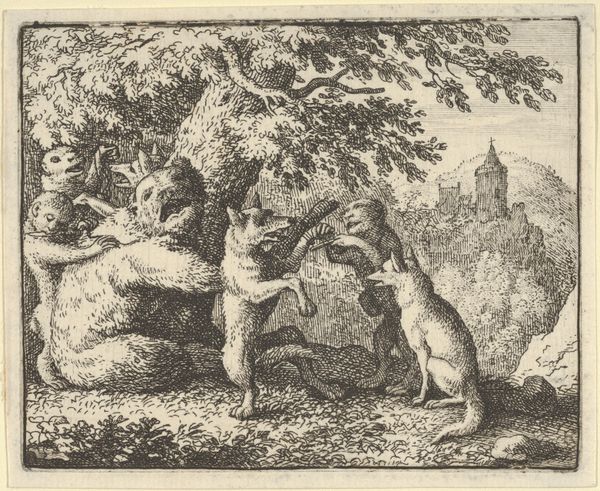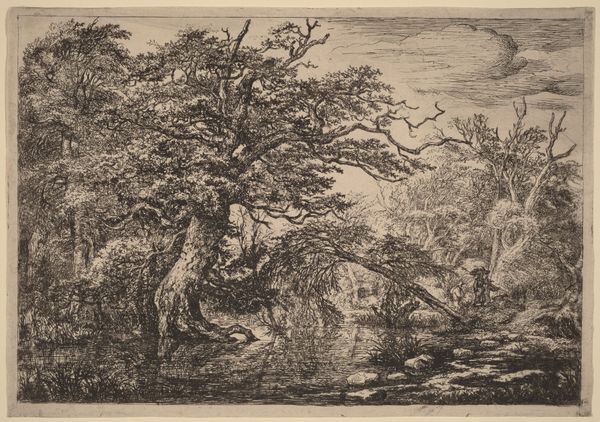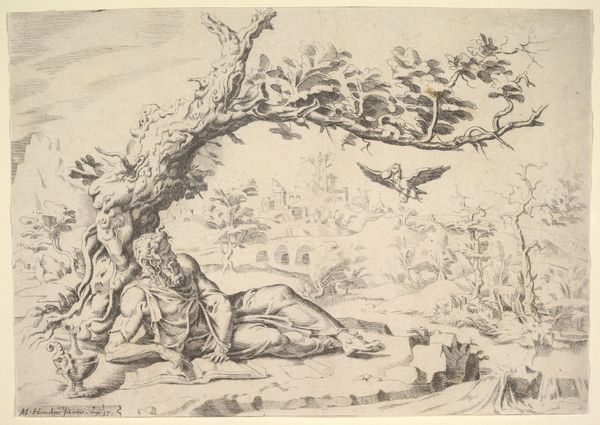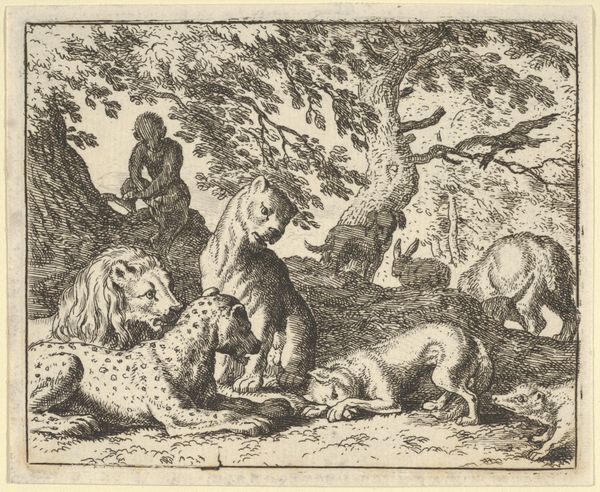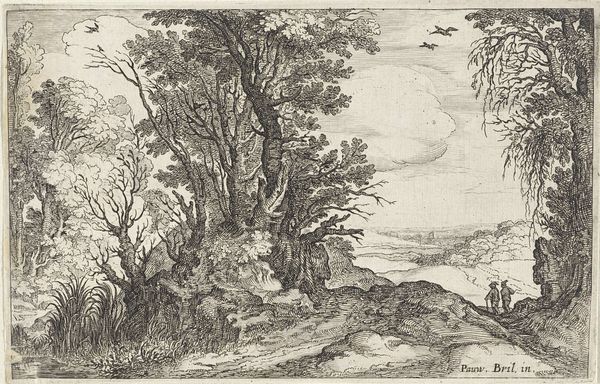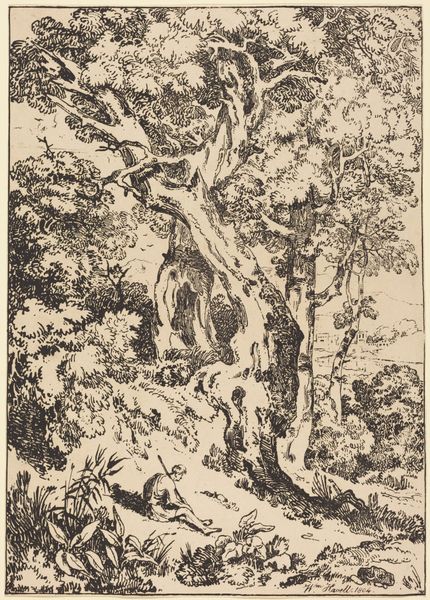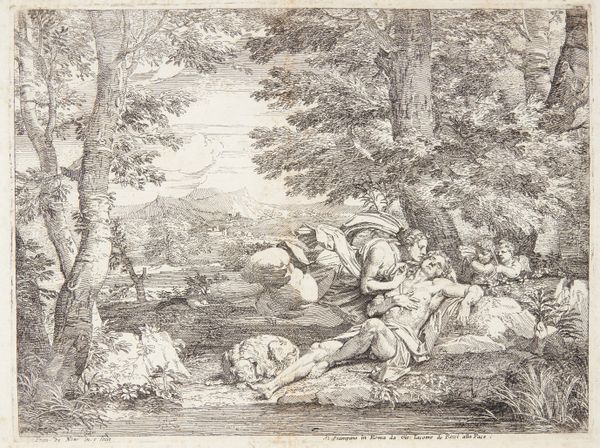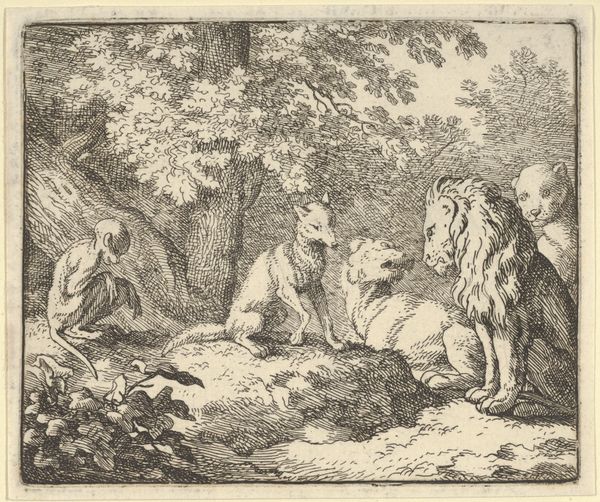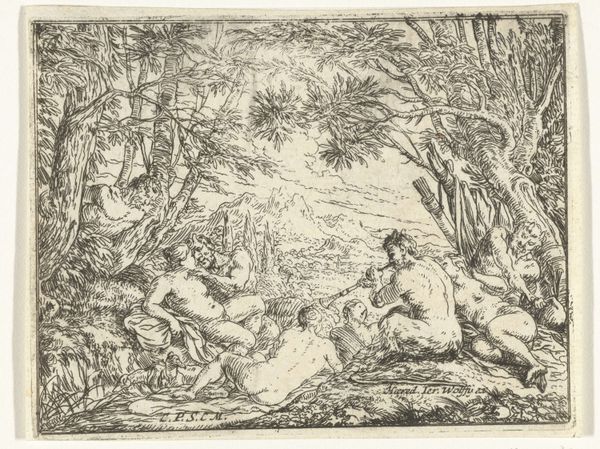
Reynard's Father and the Cat Pursued by Hounds c. 1645 - 1656
0:00
0:00
print, etching
#
ink drawing
#
narrative-art
#
baroque
# print
#
etching
#
landscape
#
etching
#
figuration
#
genre-painting
Copyright: National Gallery of Art: CC0 1.0
Curator: Allart van Everdingen created this etching, "Reynard's Father and the Cat Pursued by Hounds," sometime between 1645 and 1656. Editor: It's… intense! The stark black lines carve out a frantic energy, especially with those dogs. The landscape feels less idyllic and more like a stage for a high-stakes drama. Curator: Indeed. Everdingen, working in the Dutch Golden Age, frequently depicted landscapes infused with dramatic narratives. These animal tales, popular in the 17th century, were often allegories for social hierarchies and moral lessons. This print circulated among a burgeoning middle class eager for affordable art with sophisticated undertones. Editor: And etching itself is crucial here. Think about the labor, the copper plate, the biting of acid… it allows for the distribution of this narrative, makes it accessible in a way painting on canvas wouldn't be. Look at the density of lines; it’s almost textile-like, building texture through sheer accumulation of marks. Curator: Exactly! And these "genre paintings" often reflected contemporary society's views. Animal characters allowed artists to satirize human follies subtly. Consider how the seemingly innocent landscape can also function as a commentary on power, class, and social tensions present in Dutch society. Editor: I see that struggle in the layering. Look at the way Everdingen handles the tree; it dominates the space, yet feels as if its surface is disintegrating with each line, each bite into the metal. It’s as if nature itself is stressed, overwhelmed by the chase unfolding beneath it. It shows the fragility of everything. Curator: And, of course, the subject matter resonates deeply. The idea of pursuit and being hunted, whether literal or metaphorical, held considerable weight. The narratives were a cultural form, with prints like these shaping the wider consumption of stories, influencing moral thought through a lens easily disseminated to the public. Editor: What remains remarkable to me is how the simple act of etching, a relatively reproducible technique, brings together social critique and aesthetic energy into a very immediate visual experience. I feel the animal’s tension in those frantic lines. Curator: Absolutely. Everdingen captures the human condition—ambition, survival, even fear—all through this captivating animal drama and widely available printing technology. It makes one contemplate art’s purpose, particularly the role of narrative art and popular imagery. Editor: Well, it's a vivid example of how technique can enhance narrative and provoke feeling! The texture from etching here adds so much to the telling.
Comments
No comments
Be the first to comment and join the conversation on the ultimate creative platform.
